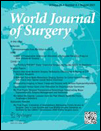A Comparison of the P-POSSUM and NELA Risk Score for Patients Undergoing Emergency Laparotomy in Singapore
Abstract
Background (aims, hypotheses, or objectives)
Emergency laparotomy (EL) is a high-risk surgical procedure associated with considerable morbidity and mortality around the world. A reliable risk-assessment tool that is specific to patients undergoing EL allows the early identification of high-risk patients and enables appropriate healthcare resource allocation. The objective of this study was to compare the commonly used Portsmouth-physiologic and operative severity score for the enumeration of mortality and morbidity (P-POSSUM) with the recently developed National Emergency Laparotomy Audit (NELA) score in terms of their accuracy for identifying patients at increased risk of 30-day mortality in a predominantly Asian population.
Methods
Physiological and operative data from a prospectively collected audit of adult patients undergoing EL in 2018 and 2019 across two tertiary hospitals in Singapore were used to retrospectively calculate both the P-POSSUM and NELA scores for each patient encounter. This was then compared to actual mortality rates to determine each model's accuracy and precision.
Results
830 patients were included in the study with a 30-day mortality of 5.66%. The area under the receiver operating characteristics curve (AUROC) was similar for both the NELA (0.86, p < 0.001, 95% CI 0.81–0.91) and the P-POSSUM models (0.84, p < 0.001, 95% CI 0.78–0.89). While the models over-predicted mortality, overall O:E ratios showed that the NELA model performance was superior to that of P-POSSUM (0.58 [95% CI 0.43–0.77] compared to 0.34 [95% CI 0.26–0.46]).
Conclusion
The NELA risk-prediction model accurately predicts 30-day mortality in this large cohort of patients undergoing EL and outperforms the current P-POSSUM model. We recommend that the NELA score should replace the P-POSSUM score as a model to distinguish between high- and low-risk patients undergoing EL.




